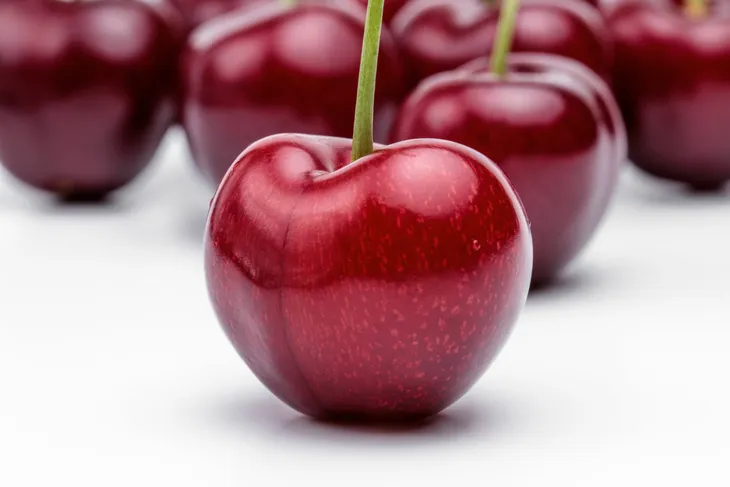Cherries once again took center stage in Argentina with the start of Cherry Day 2025, held in the town of General Roca, the epicenter of the Alto Valle de Río Negro region. This technical event has established itself as the go-to venue for producers, exporters, and advisors seeking to understand the changes in an increasingly globalized, competitive business subject to variables beyond the field.
While the meeting’s agenda focuses on technological innovation, agronomic management, and post-harvest strategies, the major underlying concern is economic: what will happen to international markets in the 2025-26 season. The questions are many and revolve around three axes: the pressure of exportable supply, the international geopolitical context, and Argentina’s macroeconomic competitiveness.
Record Supply: The Sword of Damocles Hanging Over Prices
The first variable is quantitative and overwhelming: cherry production in the Southern Hemisphere is estimated to set a new record in the 2025-26 season.
If weather conditions are favorable, exportable supply will grow between 5% and 8% compared to last season, posing a monumental challenge for marketing.
Chile, the absolute leader in the sector, projects 660,000 tons, approximately 140 million boxes, with year-over-year growth of more than 5%.
Argentina, New Zealand, and Australia, although together they do not exceed 10% of the total volume, will register relative increases of between 10% and 15%.
The key issue is not production capacity, but the absorption of these volumes by international markets. The precedent of last season in China is instructive: in January, a massive influx of fruit caused an oversupply, depressed prices, and reduced the profitability of the entire chain.
In the words of one Patagonian exporter: “China imports such significant volumes that no other market can absorb them if there is a diversion. If marketing is not managed well, we will once again face punished prices”.
Chile’s strategy will be decisive. Its focus is on expanding its penetration within the Chinese market itself, expanding into inland cities with less access to imported cherries. However, if part of that volume ends up in other destinations—Europe, the United States, Canada, Brazil, or non-China Asia—the risk is a cascading oversupply effect that directly impacts international prices.
In this sense, smaller-scale countries, such as Argentina, are left in a vulnerable position: international prices are largely determined by Chile’s commercial decisions.
Geopolitics: Cherries in the Midst of the Trade War
The second issue of concern is the geopolitical factor. The prolonged trade war between China and the United States shows no signs of resolution in the short term and threatens to once again complicate the flow of cherry trade.
This year, China imposed restrictions on US cherries, resulting in an oversupply of US fruit in other Asian markets. This distortion contributed to price instability.
With the southern hemisphere harvest just weeks away, analysts agree that a structural agreement between the two powers is unlikely in 2025. On the contrary, the most likely scenario is that the tension will continue, which could translate into a scenario of permanent uncertainty for exporters.
The risk is clear: if China maintains barriers to US cherries or those of Trump’s partners, other Asian markets could become saturated, and counter-seasonal supplies from the southern hemisphere could enter the market with very low price thresholds.
If China suddenly relaxes restrictions, it will be a new game changer for a product that is highly sensitive to these scenarios.
In both cases, the international trade balance is fragile, and Argentine companies will need to design flexible business strategies to quickly adapt to a landscape that can change overnight. A positive development: its scale allows Argentine exports to redirect their volumes abroad.
Argentina: Rising Costs and Exchange Rate Lag
The third point of analysis is the local economic situation. Argentina faces a recurring problem in its export sector: domestic costs are rising in dollars, while the official exchange rate remains lagging.
The July devaluation (around 15%) provided some relief, but it was insufficient to structurally improve competitiveness. Added to this are:
- High interest rates that make working capital financing more expensive.
- Inflation in dollars for key services and inputs, such as energy, fuel, logistics, and agrochemicals.
- Political uncertainty, with the October elections. Polls predict a victory for the ruling party, which would reduce the likelihood of further devaluations.
In the words of a producer from Neuquén: “Argentine cherries have quality, but it is increasingly difficult for us to compete. Chile has well-oiled logistics, trade agreements, and scale. We pay more for energy and freight, and our dollar doesn’t keep up”.
The result is that the profitability of Argentine exports is becoming increasingly tight. Unlike Chile, where scale allows for cost diffusion, Argentina must focus on niche markets and differentiated quality to maintain its place on the export map.
Added to this scenario is another front: Chilean cherry imports into Argentina. In 2024, the influx of Chilean fruit grew significantly, and everything indicates that it will be even greater in 2025, a result of Chile’s structural oversupply. The result is a domestic market with depressed prices, which directly impacts local producers, who find their ability to defend margins at home limited.
This creates a double front of pressure for Argentine cherries: competing in foreign markets against the trans-Andean giant and, at the same time, resisting the same Chilean cherries in the domestic market.
Technology: The positive counterweight
Beyond trade tensions, Cherry Day also showcases the bright side of the industry: technological advancement.
The technical panels will address everything from new mechanized pruning and training systems to the use of plastic covers, irrigation sensors, drones for health monitoring, and post-harvest improvements. These tools not only increase productivity and quality, but also allow for medium-term cost optimization.
In a context of tight margins, technology appears to be the only factor under producers’ direct control to improve their competitiveness. It does not solve macroeconomic problems, but it can make a difference in yield, efficiency, and quality.
Financial Outlook: Risks and Opportunities
Looking ahead to the 2025-26 season, the Southern Hemisphere cherry sector faces a highly volatile scenario.
Supply: Record high, with risk of global oversupply.
Demand: Concentrated in China, with probable saturation and limited absorption capacity in other markets.
Geopolitics: US-China trade war threatens to distort prices and flows.
Argentine competitiveness: Affected by rising domestic costs and exchange rate lag.
Analysts agree that profitability will depend less on export volume and more on commercial management, logistics, and destination diversification. For Argentina, the key will be capturing high-value niches, maintaining premium quality, and securing logistics agreements that minimize costs.
Ultimately, Cherry Day Argentina 2025 is taking place in a context that combines technical innovation in the agricultural sector and financial tensions in the markets.
The southern hemisphere is facing a campaign that could be historic in terms of volume, but also risky in terms of profitability. For Argentina, the challenge is twofold: resisting the pressure of an increasingly dominant Chile and dealing with a local macroeconomy that increases the price of each kilo exported.
The cherry is, ultimately, a thermometer of the global economy: a delicate product, highly in demand, and extremely sensitive to politics, logistics, and macroeconomics. The upcoming harvest will determine whether the Southern Hemisphere manages to transform this record production into profitability or whether, on the contrary, the red ink will once again cause concern for the industry.
Source: Más Producción









